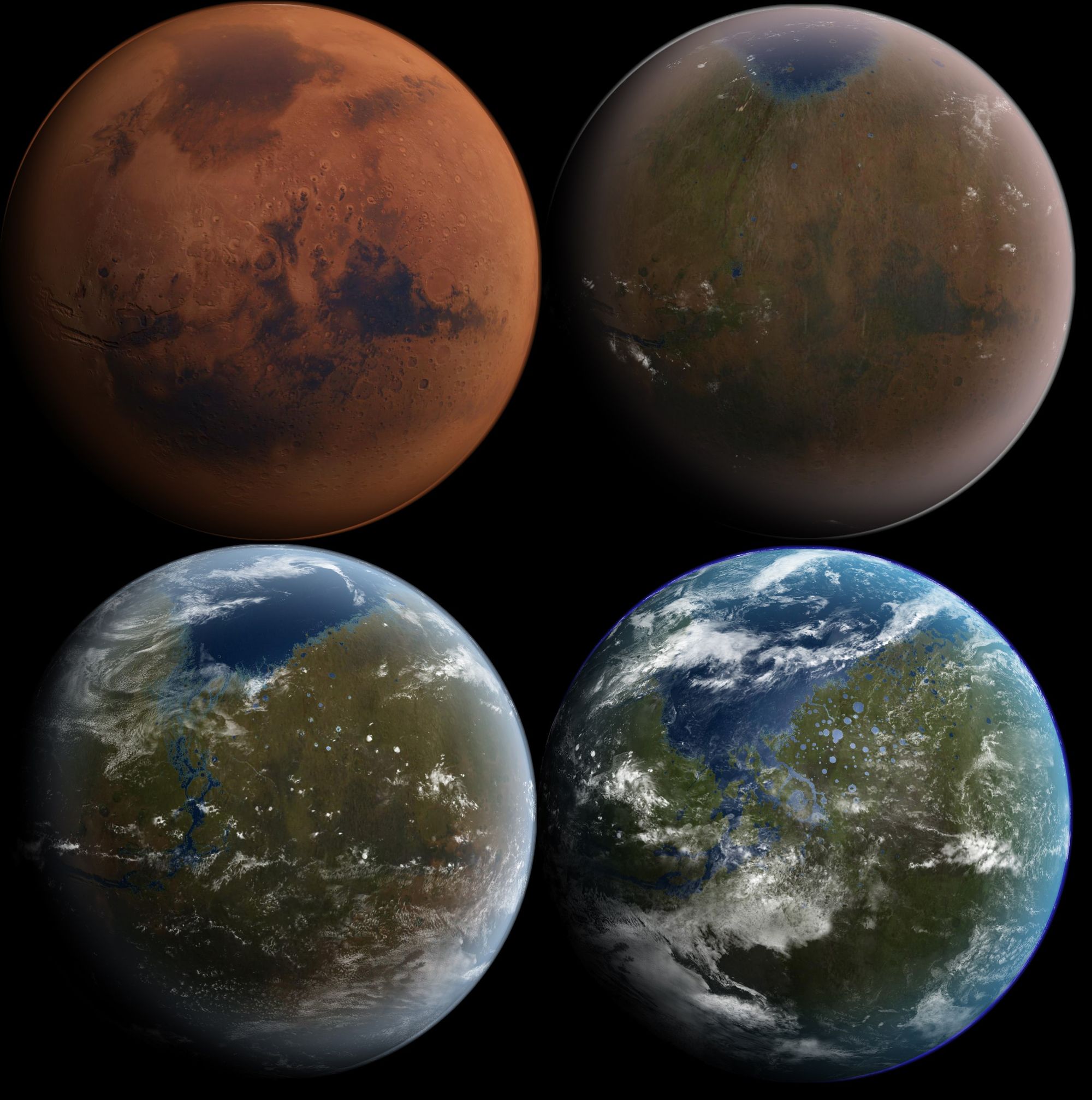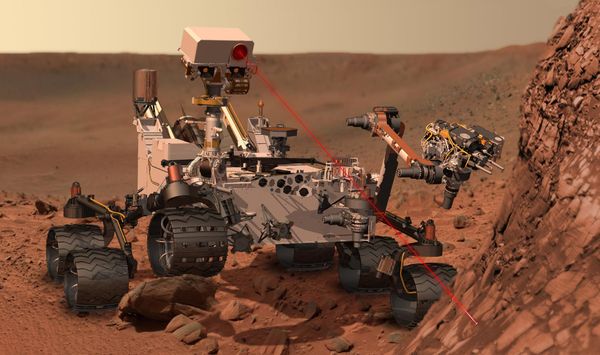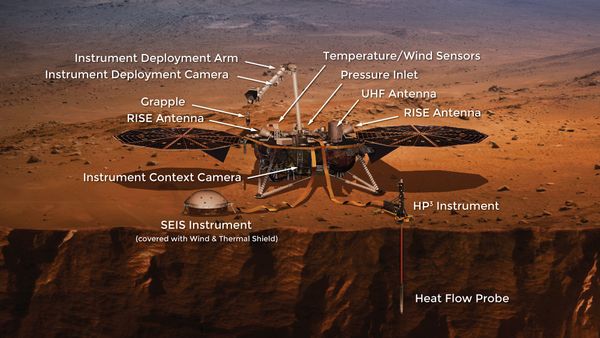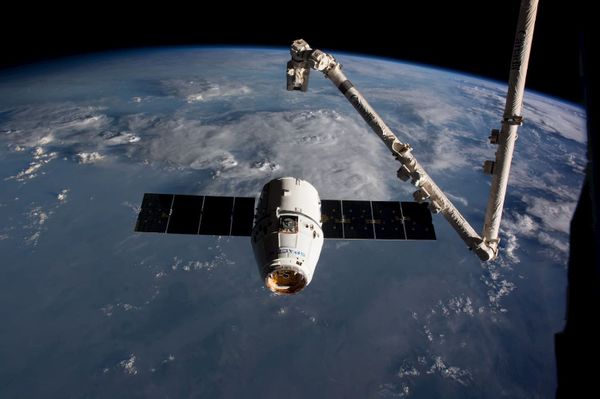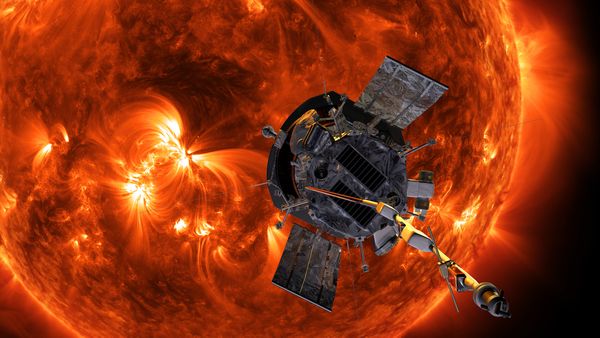Subscribe on iTunes, Google Play, or by RSS for more space exploration discussions. Cover image: Potential evolution of Mars from a dead, dry world to an Earth-like planet. Source: Wikipedia
This is the last part of our four part 'Mars May' series where we discuss the missions and technologies enabling Mars exploration. You can check out our interview with Troy Hudson on NASA's InSight mission, MarCO Structural Engineer Joel Steinkraus, as well as our interview with Doug Klein, Sampling Systems Engineer for Curiosity and Mars 2020.
Mars is a tantalizing goal for the next step in human exploration. However, the fourth, rocky planet from the Sun is a harsh world to live on. Terraforming offers the possibility of making Mars a new home for humans, but the challenge is immense. We dive into some of the key aspects of Mars colonization and terraforming today on SPEXcast.
What Makes Mars a Good Terraforming Candidate?
When looking at planetary bodies in our solar system, Mars stands out as a great choice. Mars is a rocky planet, with a solid surface and a noticable atmosphere. Unlike Venus, it does not experience planet scorching temperatures year round, rather experiencing temperatures between -143 C and 35 C as it completes its 687 Earth day year. It also has a similar day-night cycle to Earth, lasting 24 hours and 37 minutes. However, Mars is a fixer-upper of a planet. It has a very thin atmosphere, from 0.4-0.87 kPa that is 95% carbon dioxide and only 0.146% oxygen. It is also far away, both in energy and distance, averaging 225 million km between Earth and Mars orbit. However, that distance can vary quite wildly, from 54.6 million km to 401 million km, creating a periodic cycle of launch opportunities every 26 months, where the energy required to send a spacecraft to Mars is least.
Send humans to Mars is challenging, and applying the heavy industry to meaningfully change its environment is even more so.
Key Measurable Factors of Mars Terraforming
Any discussion on terraforming requires clearly defining the term and the end goals. For the sake of this discussion, we decided to scope terraforming to any process that makes Mars more hospitable to humans, rather than the complete replication of Earth's environment on another world. The Earth ecosystem is a complex system with thousands of interlinked factors so for Mars, we scaled that down to three main factors that provide the biggest impact to human habitability.
Atmospheric Pressure
Mars' current atmosphere is too thin to support life, with a pressure roughly equivalent to 1% of Earth. Air pressure is key for the viability of life on the surface of Mars due to the Armstrong Limit. The Armstrong Limit is 6.25 kPa, where water boils at human body temperature. Increasing the atmospheric pressure of mars to just 19 kPa, ~ 1/5th of the pressure at Earth sea level, would allow humans to walk on the Martian surface without a pressurized suit. However, if the composition of the atmosphere did not change, they would still need a pressuized mask providing 10% oxygen.
Atmospheric Composition
Mars' atmosphere is primarily composed of carbon dioxide, which is toxic to humans and makes up the primary waste product of human respiration. Earth's atmosphere is primarily nitrogen (78%) with oxygen (21%). However, replicating this ratio on Mars is not necessary for a breathable atmosphere. What matters is partial pressure, which is the relative pressure of a specific gas in a mixture. This allows for breathable air to have a different composition from Earth's atmosphere. For example, Apollo 1 had a 100% pure oxygen atmosphere, which allowed the capsule to be pressurized to a lower pressure while still supplying astronauts with enough oxygen to survive.
Another consideration is the removal of CO2. Rapidly thickening the atmosphere to increase greenhouse effects would increase temperature, but would remain poisonous to humans. Balancing the need for higher pressures and breathable air is a key challenge for any terraforming effort.
Temperature
Mars' average temperatures experience a large variance (-143 C to 35 C) and is mostly below freezing (mean -63 C). If humans are to live relatively unprotected on the surface and potentially engage in wide scale agriculture, the average temperature would need to rise and the extremes mitigated.
Check out the episode for potential Mars terraforming engineering solutions and challenges above.

